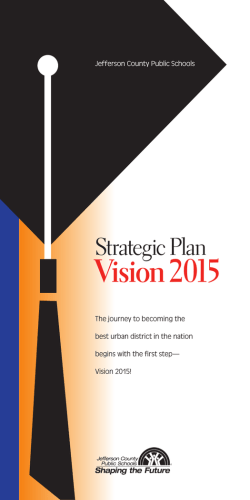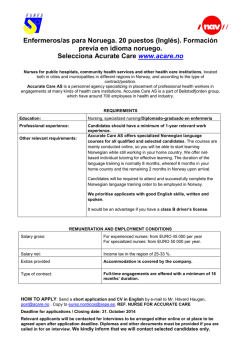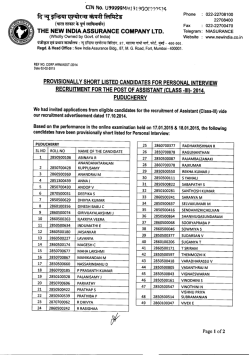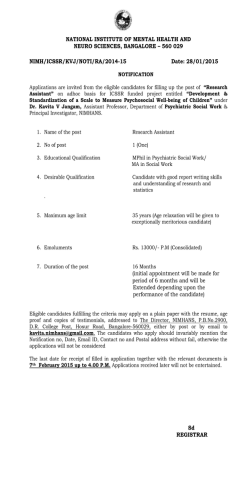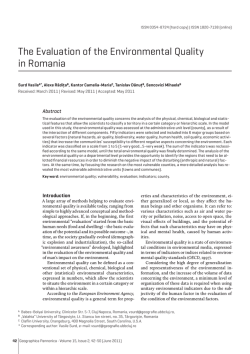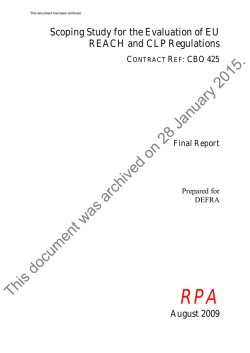
TeachersGuidelines - Massachusetts Department of Education
Guidelines for the Professional Standards for Teachers January 2015 Massachusetts Department of Elementary and Secondary Education 75 Pleasant Street, Malden, MA 02148-4906 Phone 781-338-3000 TTY: N.E.T. Relay 800-439-2370 www.doe.mass.edu This document was prepared by the Massachusetts Department of Elementary and Secondary Education Mitchell D. Chester, Ed.D. Commissioner The Massachusetts Department of Elementary and Secondary Education, an affirmative action employer, is committed to ensuring that all of its programs and facilities are accessible to all members of the public. We do not discriminate on the basis of age, color, disability, national origin, race, religion, sex or sexual orientation. Inquiries regarding the Department’s compliance with Title IX and other civil rights laws may be directed to the Human Resources Director, 75 Pleasant St., Malden, MA 02148-4906. Phone: 781-338-6105. © 2015 Massachusetts Department of Elementary and Secondary Education Permission is hereby granted to copy any or all parts of this document for non-commercial educational purposes. Please credit the “Massachusetts Department of Elementary and Secondary Education.” This document printed on recycled paper Massachusetts Department of Elementary and Secondary Education 75 Pleasant Street, Malden, MA 02148-4906 Phone 781-338-3000 TTY: N.E.T. Relay 800-439-2370 www.doe.mass.edu Guidelines for the Professional Standards for Teachers – January 2015 Guidelines for the Professional Standards for Teachers Overview The Professional Standards for Teachers (PSTs) define the pedagogical and other professional knowledge and skills required of all teachers. These PSTs and indicators are used by Sponsoring Organizations 1in designing their teacher preparation programs and in preparing their teacher candidates. The Board of Elementary and Secondary Education (BESE) approved updated PSTs as of January 2014.The following Guidelines are designed to orient stakeholders (teacher candidates, Sponsoring Organization administrators, faculty, and Supervising Practitioners) to the updated/revised PSTs and indicators, and to explain what they mean for stakeholders’ work across the Commonwealth. The PSTs and indicators are aligned to the Massachusetts' Educator Evaluation Framework. This alignment will ensure educators complete their preparation program with the knowledge and skills necessary to be effective as beginning teachers. This document includes the updated/revised PSTs and indicators, as well as guidance about how to use them. It also describes the Massachusetts Department of Elementary and Secondary Education’s (ESE) role in supporting the implementation of these new standards. Teacher candidates, Sponsoring Organization administrators, faculty, and Supervising Practitioners should use this document to strengthen their understanding of the expectations for new teachers and to guide their decisions in program design to ensure readiness for full implementation in the 2016-2017 academic year. Below is a summary of the contents in this document: I. Context II. Audience III. Organization & Structure of the PSTs & Indicators IV. Considerations for Sponsoring Organizations V. Intersecting initiatives VI. Timeline for implementation & ESE’s supporting role VII. Appendix a. Professional Standards for Teachers (with indicators) b. Guidelines for Teacher Candidates c. Guidelines for Program Supervisors & Supervising Practitioners Context The Board of Elementary and Secondary Education (BESE) and Department of Elementary and Secondary Education (ESE) have made educator effectiveness a priority in order to ensure all students are college and career ready and to close achievement gaps. Our goal is to ensure that every classroom in the Commonwealth is staffed by an effective teacher and schools and districts are organized to 1 “Sponsoring Organization” is the term ESE uses for organizations that have been approved by ESE to manage educator preparation program(s) in the state. 1 support student achievement and success. In support of achieving this goal, ESE is relying on preparation programs to prepare all educators to be effective. ESE is committed to ensuring that preparation in Massachusetts results in effective educators ready to support the success of all students on day one. The 2012 Program Approval Standards set forth a highbar for developing and delivering preparation to future educators in the Commonwealth. This preparation is the foundation for educator success with students in their own classrooms. The Program Approval Standards and subsequent policies derived from the overall shift they communicate, emphasize the value of preparation in Massachusetts and its impact on the achievement of our PreK-12 students. ESE’s work is driven by the belief that preparation can and should ensure educators are effective on the first day in the classroom. In support of this belief, BESE passed updated/revised PSTs in January 2014. These standards align expectations for teacher preparation candidates with those for in-service teachers as outlined in the Massachusetts Educator Evaluation Framework. As stated in the regulations, ESE is required to develop indicators in Guidelines. Indicators are more specific than the PSTs and help define the foundational skills on which teaching practice continues to improve with years of experience. In order to develop these indicators, ESE convened a working group to develop a set of indicators for the PSTs. The indicators included in these Guidelines reflect the proposals of this 20 person working group. The working group consisted of practicing teachers, principals, mentors and educator preparation professionals. After a three-month period of public comment, ESE reconvened the working group and finalized a set of indicators to present to the Commissioner. The finalized set of indicators is being released with these Guidelines to inform the use of PSTs and indicators. A full overview of the timeline for PST revision work is provided below: • November 2013: Proposed Regulations, 603 CMR 7.00, brought to the BESE for initial discussion • January 2014: Following a period of public comment, the BESE adopted the revised Regulations • April-June 2014: Draft indicators developed with working group • July-September 2014: Draft indicators sent out for public comment • October 2014: Reconvened working group for final discussions • January 2015: Finalized and released Guidelines The PSTs and indicators outlined in these Guidelines help ensure that preparation in Massachusetts results in teachers who are ready for the classroom on day one. We acknowledge that teaching is a profession in which individuals will grow in their expertise--indeed, the educator effectiveness policies are dedicated to supporting continuous improvement. We are clear, however, that in order to make a difference with students, teachers must meet a standard for readiness on the first day in the classroom. Those standards and expectations are manifested in the PSTs and indicators. Additionally, these PSTs and indicators are part of a comprehensive set of educator effectiveness policies. As part of the larger effort, they: • Create alignment across the educator career continuum: The PSTs and indicators make a clear link between preparation and employment in Massachusetts: the standards for which teachers are prepared are the same as those on which they are evaluated. This alignment ensures the 2 • ongoing growth and development of educators is grounded in consistent, high-expectations for teaching and leading in the Commonwealth. Strengthen preparation providers’ ability to meet district needs: The PSTs and indicators ensure candidates are trained in a way that is consistent with the realities of teaching in Massachusetts classrooms. Providers can build additional coursework and experiences that are supportive of the specific areas of need identified by partner districts. See the intersecting Initiatives section below for more information on related efforts to ensure every teacher is highly effective for our students in Massachusetts. Audience This document is designed for three main audiences: 1) Sponsoring Organization administrators and faculty; 2) Teacher Preparation Candidates; and 3) Program Supervisors and Supervising Practitioners. The table below describes how each intended audience should use the information in this document. Please note -separate pull-out documents for Candidates and Program Supervisors are included as appendices of this document. Audience: Goals for PST Guideline use: Sponsoring Organization administrators and faculty • • • • • Teacher Candidates • • Program Supervisors and Supervising • Practitioners Inform overall program design including course offerings and practicebased components Inform syllabus and assessment design Help in providing targeted feedback to candidates Provide clarity about what to expect from a preparation program Help candidates take ownership for their own learning by outlining the standards and indicators to know, practice, and demonstrate upon program completion Empower candidates to be directive about the support they need to achieve their own goals and those outlined in the PSTs and indicators. Strengthen the feedback and support candidates receive during their fieldbased experience. Guide Program Supervisors and Supervising Practitioners as they implement practicum experiences that will give candidates exposure, experience and practice across indicators. Organization and Structure of PSTs & Indicators The PSTs and indicators are intentionally aligned to the MA Educator Evaluation Framework to ensure that candidates are in fact ready for the expectations they will encounter on the job. ESE was intentional in maintaining the exact language of indicators that are currently part of the Standards of Effective Teaching Practice. In an effort to strengthen the alignment between preparation and in-service expectations, indicators were not changed; however, there are a few differences embedded in the PSTs and indicators that should be noted: • Addition of two indicators specific to the developmental needs of beginning teachers (below). The working group felt that the knowledge and skills specified in these indicators were so essential to effective preparation that they must be made more explicit. 3 • • o Social and Emotional Learning Indicator (2.e) o Classroom Management indicator (2.f) Addition of five indicators specific to Sheltered English Immersion (SEI) requirements. Enhanced requirements for current educators, under the Rethinking Equity and Teaching for English Language Learners (RETELL) initiative, were put in place after the Standards and Indicators of Effective Teaching Practice were developed. They are embedded in the PSTs and indicators in response to the ongoing efforts in PK-12 system. Differentiation of expectations by indicator. See below. Indicator Differentiation Understanding that teachers will progress on each standard throughout their career, the PSTs and indicators describe the level of practice that candidates should demonstrate by the time they complete their teacher preparation program and are endorsed for licensure. The diagram below defines each level of practice and what it means for teacher candidates during their preparation: Level of Practice Introduction Practice Demonstrate Expectations for Candidates Candidates show understanding through coursework and/or in field-based experiences. Candidates have opportunities to practice, to be observed, and to receive feedback through coursework and/or in field-based experiences. Candidates consistently demonstrate competency through coursework and in field-based experiences as measured by the teacher performance assessment. As outlined below, each indicator has a corresponding level of practice. It is important to note that these levels of practice do not suggest a hierarchy or priority. Rather, candidates should experience thoughtful exposure to each indicator and have appropriate opportunities to practice or demonstrate the indicators that are most critical for their success as a beginning teacher. (1) Curriculum, Planning, and Assessment standard: Promotes the learning and growth of all students by providing high quality and coherent instruction, designing and administering authentic and meaningful student assessments, analyzing student performance and growth data, using this data to improve instruction, providing students with constructive feedback on an on-going basis, and continuously refining learning objectives. (a) Curriculum and Planning indicator: Knows the subject matter well, has a good grasp of child development and how students learn, and designs effective and rigorous standards-based units of instruction consisting of well-structured lessons with measurable outcomes. Introduction Practice Demonstrate X (b) Assessment indicator: Uses a variety of informal and formal methods of assessment to measure student learning, growth, and understanding, develop differentiated and enhanced learning experiences, and improve future instruction. (c) Analysis indicator: Analyzes data from assessments, draws conclusions, and shares them appropriately. X X 4 SEI Indicator (a) Uses instructional planning, materials, and student engagement approaches that support students of diverse cultural and linguistic backgrounds, strengths, and challenges. X SEI Indicator (c) Demonstrates knowledge of the difference between social and academic language and the importance of this difference in planning, differentiating and delivering effective instruction for English language learners at various levels of English language proficiency and literacy. X (2) Teaching All Students standard: Promotes the learning and growth of all students through instructional practices that establish high expectations, create a safe and effective classroom environment, and demonstrate cultural proficiency. Introduction Practice Demonstrate (a) Instruction indicator: Uses instructional practices that reflect high expectations regarding content and quality of effort and work, X engage all students, and are personalized to accommodate diverse learning styles, needs, interests, and levels of readiness. (b) Learning Environment indicator: Creates and maintains a safe and collaborative learning environment that values diversity and X motivates students to take academic risks, challenge themselves, and claim ownership of their learning. (c) Cultural Proficiency indicator: Actively creates and maintains an environment in which students' diverse backgrounds, identities, X strengths, and challenges are respected. (d) Expectations indicator: Plans and implements lessons that set clear and high expectations and make knowledge accessible for all X students. (e) Social and Emotional Learning Indicator: Employs a variety of strategies to assist students to develop social emotionalX competencies: self-awareness, self-management, social awareness, relationship skills, and responsible decision-making. (f) Classroom Management Indicator: Employs a variety of classroom management strategies, and establishes and maintains X effective routines and procedures that promote positive student behavior. SEI Indicator (b) Uses effective strategies and techniques for making X content accessible to English language learners. SEI Indicator (d) Creates and maintains a safe and collaborative learning environment that values diversity and motivates students X to meet high standards of conduct, effort and performance. (3) Family and Community Engagement standard: Promotes the learning and growth of all students through effective partnerships with families, caregivers, community members, and organizations. Introduction Practice Demonstrate (a) Engagement indicator: Welcomes and encourages every family X to become active participants in the classroom and school community. (b) Collaboration indicator: Collaborates with families and X 5 communities to create and implement strategies for supporting student learning and development both at home and at school. (c) Communication indicator: Engages in regular, two-way, and culturally proficient communication with families about student X learning and performance. SEI Indicator (e) Collaborates with families, recognizing the significance of native language and culture to create and X implement strategies for supporting student learning and development both at home and at school. (4) Professional Culture standard: Promotes the learning and growth of all students through ethical, culturally proficient, skilled, and collaborative practice. Introduction Practice Demonstrate (a) Reflection indicator: Demonstrates the capacity to reflect on and improve the educator's own practice, using informal means as well as meetings with teams and work X groups to gather information, analyze data, examine issues, set meaningful goals, and develop new approaches in order to improve teaching and learning. (b) Professional Growth indicator: Actively pursues professional development and learning opportunities to improve quality of practice or build the expertise and X experience to assume different instructional and leadership roles. (c) Collaboration indicator: Collaborates effectively with X colleagues on a wide range of tasks. (d) Decision-making indicator: Becomes involved in schoolwide decision-making, and takes an active role in school X improvement planning. (e) Shared Responsibility indicator: Shares responsibility X for the performance of all students within the school. (f) Professional Responsibilities indicator: Is ethical and X reliable, and meets routine responsibilities consistently. Considerations for Sponsoring Organizations The PSTs and indicators are aligned to the MA Educator Evaluation Framework to ensure that beginning teachers are prepared for their first year of teaching. The PSTs and indicators also have implications for Sponsoring Organization administrators and faculty as they design program components to ensure that candidates are ready for their first year in the classroom. For Sponsoring Organization administrators the PSTs and indicators should inform overall program design. Administrators should use the PSTs and indicators to determine course offerings that ensure candidates have appropriate exposure, practice, and demonstrated expertise in the standards. Through advising and course offerings, programs should emphasize that these PSTs and indicators are the same ones teachers will experience as expectations from their hiring district and when evaluated in a MA district. To better understand the MA Educator Evaluation Framework, read more at www.doe.mass.edu/edeval. Additionally, Sponsoring Organizations should develop processes for goal6 setting, practice, and reflection on these standards to ensure that candidates build a habit of reflective practice before they enter the classroom. For Sponsoring Organization faculty, the PSTs and indicators should guide course design and decisions about the depth and breadth of specific content. Faculty should consider the levels of practice – introduction, practice, and demonstrate– and build courses to meet these specific requirements. PSTs and indicators should also drive the development of assessments which provide candidates with an opportunity to see how they are progressing in relation to each indicator. Faculty should utilize the PSTs and indicators to monitor candidate progress and provide targeted feedback that helps candidates to grow and reflect on their teaching practice. Finally, for all Sponsoring Organization administrators and faculty, PSTs and indicators should prompt collaboration across the faculty to ensure that courses collectively cover them appropriately in a way that fully prepares each teacher to be effective. A full set of expectations for preparation programs’ instructional design, delivery and assessment can be found in the Review Evaluation Criteria list. Intersecting Initiatives The PSTs and indicators represent one component of a broader set of changes that impact preparation in Massachusetts. It is critical that these initiatives be planned and implemented in a cohesive way, as opposed to distinct and separate efforts. Below are descriptions of the important parallel initiatives, which are directly related to the PSTs and indicators. Intersecting Initiative Educator Evaluation Overview Connection to PSTs In 2011 the state adopted regulations for the evaluation of MA educators in an effort to promote the growth and development of educators; place student learning at the center of conversations about improvement; shorten timelines for improvement; and recognize excellence in the profession. The Educator Evaluation Framework was implemented in all districts in the 2013-2014 school year. The four Professional Standards for Teachers used in preparation are the same expectations outlined for in-service teachers. Likewise, while the PST indicators for preparation candidates are differentiated to indicate a progression, they are the same as the expectations outlined for current MA teachers. This alignment ensures that educators are prepared under the same expectations on which they are evaluated and supported once employed. http://www.doe.mass.edu/edeval/ 7 Intersecting Initiative Massachusetts Curriculum Frameworks Overview Connection to PSTs The state adopted ELA and Math Curriculum Frameworks in 2011 which align with the Common Core State Standards. These standards are designed to prepare students for college and career readiness. Schools and districts fully implemented these standards beginning in 2013-2014 school year. The 2011 MA Curriculum Frameworks required a number of instructional shifts in standards-based teaching. Current teachers have been engaged in significant professional development in support of these shifts and in an effort to effectively support PreK-12 students in meeting these standards. The alignment of the PSTs and indicators to the standards for in-service teachers ensures that http://www.doe.mass.edu/candi/ newly prepared educators enter the classroom ready to support success of all students. Subject-Matter SMKs govern the content requirements for In the same way that the PSTs and indicators Knowledge (SMK) licensure in Massachusetts. Some speak to candidates’ pedagogical knowledge requirements Massachusetts Tests for Educator Licensure and skills, the SMKs detail the requirements (MTELs) are an assessment of the Subjectfor demonstrated content mastery. Matter Knowledge Requirements. ESE Subsequently, together the SMK and PSTs and convened a working group to update the SMK indicators are the foundation on which all Regulations 603 in alignment with the MA Curriculum preparation programs should be designed. As CMR 7.06 Frameworks. ESE anticipates bringing a new preparation providers revise programs set of SMKs to the BESE in January 2015. according to the PSTs and indicators they should do so with the new SMKs in mind as well. See implementation section below. Teacher All preparation programs are required to The new Teacher Performance Assessment Performance assess candidates’ readiness for licensure will assess candidates on the PSTs and Assessment using a department-defined performance indicators outlined in these guidelines. (TPA) assessment. Currently referred to as the Pre- Successful completion fn the Teacher Service Performance Assessment (PPA), ESE is Performance Assessment will be required for developing a new performance assessment program completion. See implementation that further strengthens the alignment section below. between preparation and in-service. The Teacher Performance Assessment will be modeled after the MA Model System for Educator Evaluation. http://www.doe.mass.edu/edprep/ Program Review Process All preparation providers undergo formal review of their programs every 7 years. Approval allows preparation organizations to endorse candidates for licensure. ESE has developed a comprehensive review process for evaluating preparation programs based on the Program Approval Standards adopted in June 2012. The first full implementation of the standards using this enhanced process occurred in the 2014-2015 school year. The Program Approval Standards require Sponsoring Organizations to “ensure that completers have been assessed and mastered the Professional Standards for Teachers…” Subsequently, providers are responsible for updating their programs to incorporate the standards and for assessing candidates against them. The criteria programs are evaluated on should inform redesign efforts. See implementation section below. 8 Intersecting Initiative Re-envisioning Licensure Overview Connection to PSTs http://www.doe.mass.edu/edprep/pr.html Beginning in the 2016-2017 school year, Sponsoring Organizations will be required to submit updated program documents for review. Data produced as a result of the new PSTs and indicators and TPA will be part of the review in the 2017-2018 school year. ESE does not anticipate changes to the standards (PSTs or SMKs) as part of the licensure policy changes. While there may be other structural changes to the licensure system that may impact preparation, these standards are likely to remain a stable component of the regulations. In spring 2014, ESE embarked on an initiative to re-examine existing licensure policies. ESE is committed to a licensure system that is: 1) in alignment with other educator effectiveness policies in the Commonwealth, 2) meaningful for educators and 3) streamlined. http://www.doe.mass.edu/edprep/ntep.html Timeline for Implementation and ESE’s Supporting Role Sponsoring Organizations are responsible for updating all teacher preparation programs in support of the PSTs and indicators. The PSTs and indicators outlined in these guidelines differ significantly from the previously existing standards. Due to this shift, it is anticipated that programs will need to make substantive changes to the design and execution of their programs. While ESE recognizes that all Sponsoring Organizations may require a different extent of redesign, all efforts should keep in mind that the PSTs and indicators, updates to the Subject Matter Knowledge requirements and the development of a new Teacher Performance Assessment are closely linked initiatives that together encourage a shift that is evidence-driven, outcomes-based, and increasingly linked to districts’ needs. The BESE passed the PSTs in January of 2014, at which point Sponsoring Organizations began preparing for changes based on the revisions. Recognizing the significant shift these PSTs and indicators require, ESE extended the typical 18-month implementation window to a three-year implementation window. To allow for robust program redesign, ESE has outlined an implementation timeline over a three-year period. The first year will allow programs to plan effectively; the second year allows intermediary steps to support transition; full implementation will take effect in the third year. The chart below represents the three-year implementation timeline. 9 ESE’s Support in Implementation Sponsoring Organizations are chiefly responsible for implementing the PSTs and indicators. In support of this, ESE has invested significantly in developing a mechanism for collaboration and feedback as Sponsoring Organizations make program changes that support teacher readiness. ESE believes that this approach is responsive to previous feedback received from the field and will result in more productive efforts to support SO’s full implementation. Specifically, ESE is interested in fostering collaboration across Sponsoring Organizations and programs; illuminating promising practices and trends; encouraging innovation and creativity; and providing concrete, actionable feedback as Sponsoring Organizations make changes to their existing program models. Work done during Phase 1-Initiate in the 2014-2015 school year will ensure that Sponsoring Organizations are ready for Phase 2-Install in the 2015-2016 school year, during which they will execute their plans. Throughout Phase 2-Install, Sponsoring Organizations will be asked to make any necessary revisions based on ongoing monitoring and evaluation of the initiation plan. All Sponsoring Organizations will be accountable for the results of their program revisions during the formal review process beginning in the 2016-2017 school year and via annual reporting data beginning in the 2017-2018 school year. The criteria used in the evaluation of programs can help Sponsoring Organizations focus redesign efforts. ESE maintains the authority to request additional documentation of any Sponsoring Organization at any point to assess the quality of preparation provided to candidates. 10 Appendix A Professional Standards for Teachers: Standards & Indicators The Board of Elementary and Secondary Education (BESE) passed Professional Standards for Teachers (PSTs) in January 2014. These standards align expectations for preparation candidates with those for in-service teachers as outlined in Massachusetts’ Educator Evaluation Framework. As stated in the regulations, ESE is required to develop indicators in Guidelines. Indicators help define the foundational skills on which teaching practice continues to improve with years of experience. (1) Curriculum, Planning, and Assessment standard: Promotes the learning and growth of all students by providing high quality and coherent instruction, designing and administering authentic and meaningful student assessments, analyzing student performance and growth data, using this data to improve instruction, providing students with constructive feedback on an on-going basis, and continuously refining learning objectives. Introduction Practice Demonstrate (a) Curriculum and Planning indicator: Knows the subject matter well, has a good grasp of child development and how students learn, and designs effective and rigorous standards-based units of instruction consisting of X well-structured lessons with measurable outcomes. (b) Assessment indicator: Uses a variety of informal and formal methods of assessment to measure student learning, growth, and understanding, develop differentiated and enhanced learning experiences, and improve X future instruction. (c) Analysis indicator: Analyzes data from assessments, draws conclusions, and shares them appropriately. X SEI Indicator (a) Uses instructional planning, materials, and student engagement approaches that support X students of diverse cultural and linguistic backgrounds, strengths, and challenges. SEI Indicator (c) Demonstrates knowledge of the difference between social and academic language and the importance of this difference in planning, differentiating and delivering effective instruction for English X language learners at various levels of English language proficiency and literacy. (2) Teaching All Students standard: Promotes the learning and growth of all students through instructional practices that establish high expectations, create a safe and effective classroom environment, and demonstrate cultural proficiency. Introduction Practice Demonstrate (a) Instruction indicator: Uses instructional practices that reflect high expectations regarding content and quality of effort and work, engage all students, and are personalized to accommodate diverse learning styles, X needs, interests, and levels of readiness. (b) Learning Environment indicator: Creates and maintains a safe and collaborative learning environment that values diversity and motivates students to take academic risks, challenge themselves, and claim ownership of X their learning. (c) Cultural Proficiency indicator: Actively creates and maintains an environment in which students' diverse X backgrounds, identities, strengths, and challenges are respected. (d) Expectations indicator: Plans and implements lessons that set clear and high expectations and make X knowledge accessible for all students. 11 (e) Social and Emotional Learning Indicator: Employs a variety of strategies to assist students to develop social emotional-competencies: self-awareness, self-management, social awareness, relationship skills, and responsible decision-making. (f) Classroom Management Indicator: Employs a variety of classroom management strategies, and establishes and maintains effective routines and procedures that promote positive student behavior. X X SEI Indicator (b) Uses effective strategies and techniques for making content accessible to English language learners. X SEI Indicator (d) Creates and maintains a safe and collaborative learning environment that values diversity and X motivates students to meet high standards of conduct, effort and performance. (3) Family and Community Engagement standard: Promotes the learning and growth of all students through effective partnerships with families, caregivers, community members, and organizations. Introduction Practice Demonstrate (a) Engagement indicator: Welcomes and encourages every family to become active participants in the X classroom and school community. (b) Collaboration indicator: Collaborates with families and communities to create and implement strategies for X supporting student learning and development both at home and at school. (c) Communication indicator: Engages in regular, two-way, and culturally proficient communication with X families about student learning and performance. SEI Indicator (e) Collaborates with families, recognizing the significance of native language and culture to X create and implement strategies for supporting student learning and development both at home and at school. (4) Professional Culture standard: Promotes the learning and growth of all students through ethical, culturally proficient, skilled, and collaborative practice. (a) Reflection indicator: Demonstrates the capacity to reflect on and improve the educator's own practice, using informal means as well as meetings with teams and work groups to gather information, analyze data, examine issues, set meaningful goals, and develop new approaches in order to improve teaching and learning. (b) Professional Growth indicator: Actively pursues professional development and learning opportunities to improve quality of practice or build the expertise and experience to assume different instructional and leadership roles. (c) Collaboration indicator: Collaborates effectively with colleagues on a wide range of tasks. (d) Decision-making indicator: Becomes involved in school-wide decision-making, and takes an active role in school improvement planning. (e) Shared Responsibility indicator: Shares responsibility for the performance of all students within the school. (f) Professional Responsibilities indicator: Is ethical and reliable, and meets routine responsibilities consistently. Introduction Practice Demonstrate X X X X X X 12 Appendix B Specific guidelines for teacher candidates The Professional Standards for Teacher (PSTs) and indicators are aligned to the Massachusetts’ Educator Evaluation Framework to ensure that you are prepared for your first year of teaching. The PSTs and indicators should accomplish three main objectives: 1. Provide clarity about what to expect from a preparation program; 2. Help you take ownership over your own learning by outlining the PSTs and indicators you must know, practice, and demonstrate upon program completion; and 3. Empower you to be directive about the support you need to achieve you own goals and those outlined in the PSTs and indicators. Of course, you will continue to grow and develop in all areas throughout your career. However, as a teacher candidate, you can expect different level of exposure and practice for the various Standards and Indicators. Each PST and indicator is marked “Introduction”, “Practice”, or “Demonstrate.” Below is the description of what each level means for you during your preparation. Level of practice Introduction Practice Demonstrate Implications for candidates Candidates show understanding through coursework and/or in field-based experiences. Candidates have the opportunity to practice, to be observed, and to receive feedback during field-based experiences. Candidates consistently demonstrate competency through coursework and in field-based experiences as measured by the teacher performance assessment. Consistency between these PSTs and indicators and the MA Educator Evaluation Framework means that there should be consistency between your pre-service training and the expectations once you’re employed. The PSTs and indicators should help you develop a reflective practice where you self-assess your skills and ability to continuously become a stronger teacher. You should use the PSTs and indicators throughout your teacher preparation to ensure you have the requisite knowledge and experiences to demonstrate proficiency in these areas. Additional resources and information about the PSTs and indicators can be found in the Guidelines for the Professional Standards for Teachers available at http://www.doe.mass.edu/edprep/resources.html. 13 Appendix C Specific guidelines for Program Supervisors & Supervising Practitioners The Professional Standards for Teacher (PSTs) and indicators are aligned to the Massachusetts’ Educator Evaluation Framework to ensure that beginning teachers are prepared for their first year in the classroom. Broadly, PSTs and indicators should strengthen the feedback and support that candidates receive during their field-based experience. They should also guide Program Supervisors and Supervising Practitioners as they design practicum experiences that will give candidates exposure, experience and practice in critical areas. Program Supervisors should use PSTs and indicators to provide specific and relevant feedback to candidates. PSTs and indicators should guide coaching conversations and be utilized as a point of reflection for candidates as they set improvement goals and monitor their own progress. Program Supervisors should also utilize the levels of practice – Introduction, Practice, and Demonstration – to verify that candidates have opportunities to engage with different activities appropriately and frequently. A description of each level of practice is included below: Level of practice Introduction Practice Demonstrate Implications for candidates Candidates show understanding through coursework and/or in field-based experiences. Candidates have the opportunity to practice, to be observed, and to receive feedback during field-based experiences. Candidates consistently demonstrate competency through coursework and in field-based experiences as measured by the teacher performance assessment. Supervising Practitioners should use PSTs and indicators to determine when and how often candidates have opportunities to practice specific skills. The levels of practice (listed in the table above) provide guidance about how much exposure and experience candidates need with each PST and indicator. Further, Supervising Practitioners should utilize PSTs and indicators to provide targeted feedback that helps candidates to progress and reflect on their practice. Please note: The Teacher Performance Assessment (TPA) will specify what “effectiveness” looks like for candidates on all Demonstrate-level indicators. Program Supervisors and Supervising Practitioners should make sure that candidates are aware of this requirement, and they should ensure candidates have ample opportunities to practice and demonstrate these indicators. ESE is developing a performance assessment that aligns with the MA Educator Evaluation Framework. This assessment will replace the current Pre-service Performance Assessment (PPA) beginning in the 2016-2017 school year. Additional resources and information about the PSTs and indicators can be found in the Guidelines for the Professional Standards for Teachers available at http://www.doe.mass.edu/edprep/resources.html. 14
© Copyright 2026
